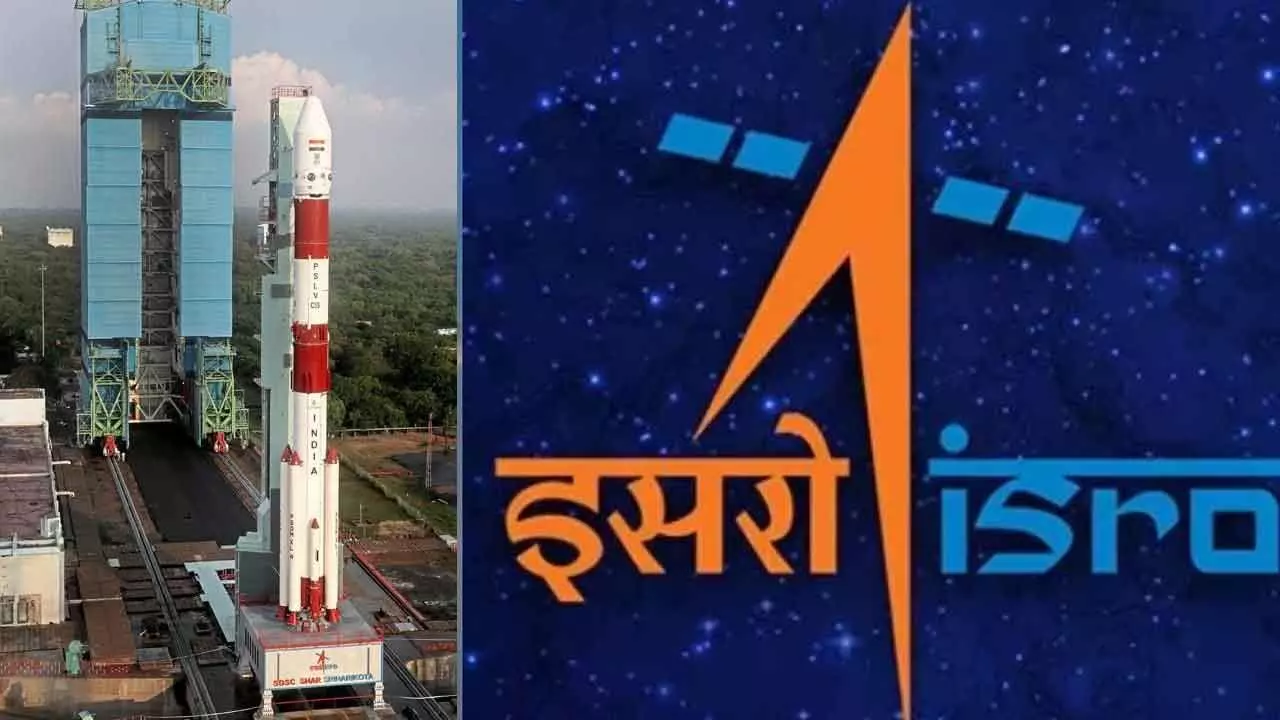Live
- Vizag to echo ‘Namo’ on January 8
- Time not far for India's first bullet train says Narendra Modi
- Catalyst for regional growth: PM Modi
- SpaDeX docking postponed to Jan 9
- Ajo-Vibho-Kandalam Foundation awards presented
- MyVoice: Views of our readers 7th January 2025
- Three children tests positive for HMPV
- Return Of The Natives After The End Of Dictatorship: Syrians return home in thousands
- 8 jawans, driver killed as Maoists blow up vehicle
- Pawan announces Rs. 5 L each to kin of two youth died in road mishap
Just In
ISRO gears up for ESA’s Proba-3 launch today


Tirupati: The Indian Space Research Organisation (ISRO) is preparing to launch the European Space Agency’s (ESA) ambitious Proba-3 solar mission...
Tirupati: The Indian Space Research Organisation (ISRO) is preparing to launch the European Space Agency’s (ESA) ambitious Proba-3 solar mission aboard its dependable PSLV-C59 rocket.
Scheduled for lift-off at 4.08 pm on December 4 from the Satish Dhawan Space Centre (SHAR) in Sriharikota, this mission represents a significant commercial collaboration under NewSpace India Limited (NSIL), showcasing India’s expanding influence in global space exploration efforts. The countdown began at 3.08 pm on Monday.
Proba-3 is a cutting-edge in-orbit demonstration project developed by ESA, aiming to achieve a breakthrough in ‘precision formation flying’.
The mission comprises two small satellites, the Coronagraph Spacecraft (CSC) and the Occulter Spacecraft (OSC), which will launch together before separating to maintain a meticulously synchronised formation. This configuration will function as a unified, large-scale structure in space, laying the groundwork for future multi-satellite missions that demand intricate coordination.
Developed at an estimated cost of €200 million, Proba-3 will enter an elliptical orbit ranging from 600 km at its closest point to 60,530 km at its farthest, with an orbital period of 19.7 hours. It is the latest addition to ESA’s Proba series, succeeding Proba-1, launched in 2001, and Proba-2, launched in 2009 – both aboard ISRO’s launch vehicles.
At the mission’s core is a solar coronagraph designed to observe the Sun’s corona, its outermost layer, where temperatures reach a staggering 2 million degrees Fahrenheit.
This critical region holds clues to solar activity and its influence on space weather. To facilitate this, the Coronagraph and Occulter will simulate a solar eclipse, with one satellite blocking the Sun’s light while the other captures extended views of the corona, enabling continuous observation for up to six hours – vastly exceeding the brief duration of natural eclipses.
The mission is equipped with state-of-the-art instruments to enhance solar research. ASPIICS, mounted on the Coronagraph, will deliver high-resolution images of the Sun’s corona. DARA, aboard the Occulter, will measure the Sun’s total energy output, and 3DEES on the Coronagraph will study electron fluxes in Earth’s radiation belts, contributing to space weather monitoring.
The PSLV-C59 rocket, a cornerstone of ISRO’s fleet, will execute its 61st flight with this launch and the 26th in its PSLV-XL configuration. Renowned for its versatility and reliability, the PSLV has consistently delivered complex payloads into diverse orbits. For Proba-3, it will achieve an apogee of 60,530 km and a perigee of 600 km, with an orbital inclination of 59 degrees.
Post-launch, ISRO and ESA aim to deepen their collaboration through shared research opportunities, leveraging data from India’s Aditya-L1 solar mission and Proba-3.
This partnership promises to enhance understanding of solar dynamics and their effects on earth’s environment. As Proba-3 prepares to embark on its journey, the mission underscores the growing significance of international cooperation in addressing complex scientific questions, further cementing India’s reputation as a pivotal player in the global space industry.

© 2024 Hyderabad Media House Limited/The Hans India. All rights reserved. Powered by hocalwire.com






